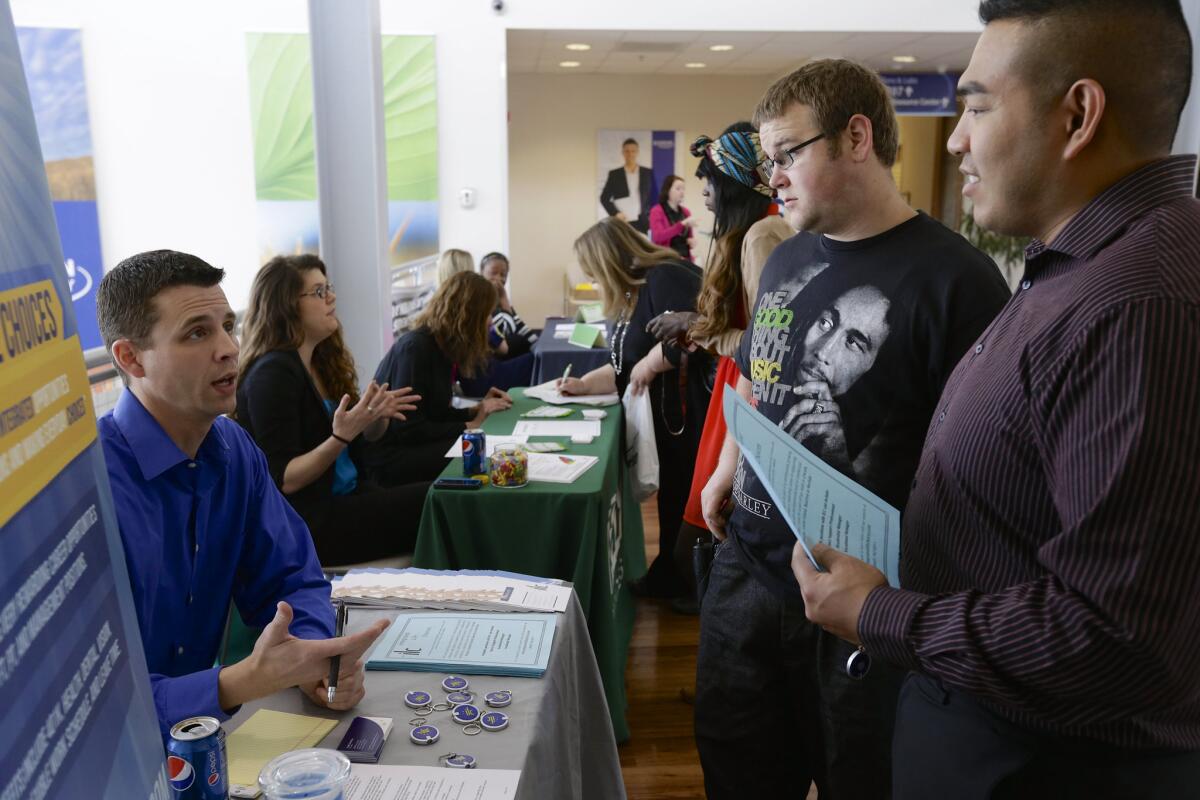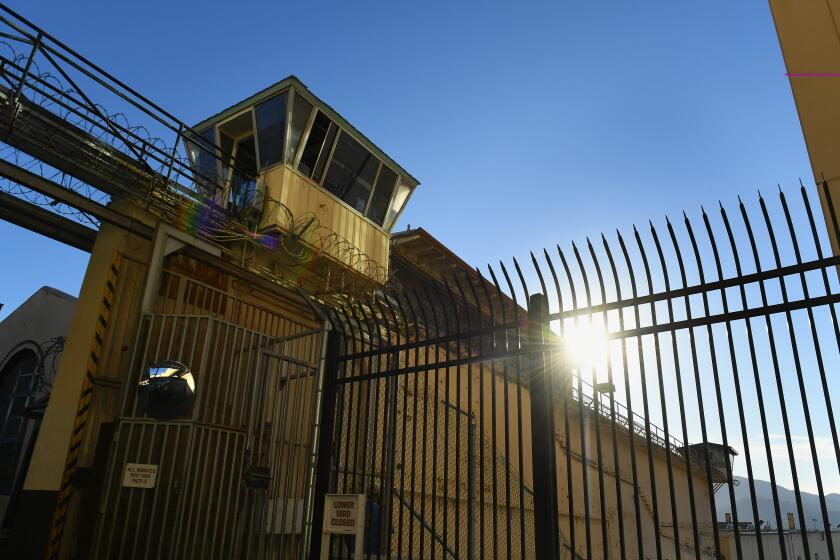Opinion: Another look at the April jobs report: Why is the workforce shrinking?

Scott Martelle’s Opinion L.A. post about Friday’s employment report argues that there’s something ugly bubbling beneath the sharp decline in the unemployment rate. I agree with him on the big picture but disagree on how the pieces fit together.
For the record, Scott is my newest colleague on the editorial board, and we often find ourselves on opposite sides of the issues we take up. On the April employment report, however, I would offer readers the same warning he did: The unexpectedly large number of jobs created isn’t as encouraging as it seems. That’s because the number of working-age Americans who are either holding jobs or looking for them -- known as the “participation rate” -- dropped sharply.
Where we differ is on the factors behind the drop. Scott blamed layoffs and people dropping out of the workforce. The data from the Bureau of Labor Statistics, however, suggest that the problem is that fewer people are dropping in.
The BLS’ employment situation report tracks why people are unemployed, and Friday’s release says that layoffs weren’t as big a factor as in previous months. Specifically, a quarter of a million fewer workers were unemployed in April because of layoffs or completed assignments than in March. The number -- 5.2 million -- is about 1 million workers fewer than a year ago. It also notes that 31,000 unemployed workers had quit their jobs and hadn’t found a new one.
Of course, the BLS bases the unemployment rate only on jobless people who are still in the workforce. It has a separate category, called “discouraged workers,” for the jobless who’ve dropped out. The BLS reported that there were 783,000 “discouraged workers” in April, an increase of 85,000 over March’s total. At the same time, the number of people who’d been unemployed for 27 weeks or longer -- in other words, prime candidates for becoming “discouraged workers” -- decreased by 287,000, or more than 6%.
So clearly there are cross-currents blowing through the data. Yet the BLS release identifies two factors in the decline in labor force participation that were more significant than the increase in discouraged workers. One was the sharp drop in re-entrants, or people who’d dropped out of the workforce temporary but were getting back in. Think parents of young children or former workers who took a break to go back to school full time. There were 417,000 fewer re-entrants in April than in March, and more than half a million fewer than a year ago. Another was a drop in the number of new entrants into the workforce. There were 126,000 fewer new entrants in April than in March, and more than 200,000 fewer than in April 2013.
I can only speculate about why these things happened and whether they’re good signs or bad ones. If people aren’t trying to find work because they’re convinced they can’t find a good job, that’s bad. We know that’s a factor. But if the missing workers are people getting college degrees instead of going to work as cashiers, that’s a good thing, right? That does seem to be one of the factors involved, particularly among younger workers. And if the labor force is shrinking because more people are retiring before age 65, that’s a sword that cuts both ways: It lowers economic output, but it may also create badly needed job openings.
The severity of the drop in participation is striking, especially after three consecutive months of increasing rates. But those increases may have been misleading. Economists have long expected the participation rate to peak in the early part of the century, then shrink because of the changing demographics of the U.S. population. The decrease may simply be happening sooner than people were predicting before the recession, as three Federal Reserve economists pointed out last year.
The BLS data about April are sure to be revised next month as more complete information comes in. And it’s dangerous to draw conclusions from a single month’s report, given the volatility of the numbers. It’s clear that the good news about job creation is mitigated by the decrease in the participation rate. It’s less clear why that’s happening, and what it means.
ALSO:
Think California is bad for business? Think again.
Union Station: L.A.’s nearly perfect time machineJustice Stevens’ proposed constitutional amendment might be bad news for a free press
Follow Jon Healey on Twitter @jcahealey and Google+
More to Read
A cure for the common opinion
Get thought-provoking perspectives with our weekly newsletter.
You may occasionally receive promotional content from the Los Angeles Times.











